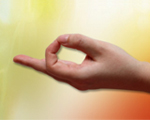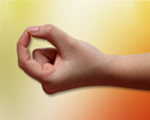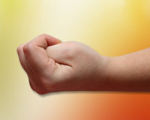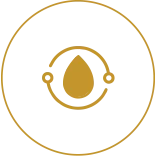“The initial 40-day period after delivery of my baby was quite difficult, as during that time I felt weak, both physically and emotionally, and wanted the same love and attention as my baby. During this phase, some women are not very strong and they get irritated with petty things. This is very common and I went through it too,” said Meghna Kalta, an Art of Living teacher, Yoga teacher/practitioner and a mother.
Post-pregnancy is a tough time for most women who deal with its after-effects, such as weight gain, sagging of muscles, joint pain, backache, fatigue, hormonal imbalance, high blood pressure, and weakness due to nutritional deficiency. Yogic postures, correct Ayurveda diet, and meditation can help deal with symptoms of postpartum depression among women, occurring post-delivery.
1. Yoga Helps In Faster Recovery
“I had a C-section delivery and though there was physical pain, yoga and meditation played a significant role in relaxing my mind and helping me settle within, Kalta said.
Step by step guide on how to Yoga it through postpartum depression-
- Some of the suggested Pranayamas or Breathing exercises that can be practiced
- Ujjayi breath (Victory breath also called the Darth Vader breath because here you breathe by constricting your vocal chords)
- Full yogic breath
- Bhramari Pranayama (Bee breathing technique)
- Yoga Nidra (Yogic power nap where meditative attention is taken through each part of the body. This gives deep relaxation to the body and mind in just 20 minutes )
- Nadi Shodhan Pranayama (Alternate nostril breathing technique)
- After delivery, Kalta continued Nadi Shodhana pranayama and Mudra pranayama throughout six months. All this helped her recover faster and better.
- A very powerful tool to recover from postpartum depression are Mudras. Based on the principle of Ayurveda, Yoga Mudras are understood as a healing modality. The Sanskrit word mudra is translated as a gesture. Mudras used in combination with breathing exercises enliven the flow of prana in the body, thereby energizing different parts of the body. According to Ayurveda, diseases are caused due to an imbalance in the body, which in turn is caused by lack or excess of any of the five elements.
2. Mudras
- Our fingers have the characteristics of these elements and each of these five elements serves a specific and important function within the body. The fingers are akin to electrical circuits. The use of mudras adjusts the flow of energy – affecting the balance of air, fire, water, earth, ether – and facilitate healing.
- Instructions for the Mudras (It is strongly recommended that these Mudras are learned and practiced under a Sri Sri Yoga faculty member.)
1) Yoga mudras are practiced sitting cross-legged, or in Vajrasana, or in the lotus posture, or even by sitting comfortably on a chair. Ideally, Ujjai breathing is done when practicing most mudras.
2) In each yoga mudra, take at least twelve breaths and closely observe the flow of energy in the body.
- Chin Mudra

>Hold the thumb and index finger together lightly while extending the remaining three fingers.
>The thumb and index finger need only touch together, without exerting any pressure.
>Keep the three extended fingers as straight as possible.
>The hands can then be placed on the thighs, facing upwards.
>Now, observe the flow of breath and its effect.
- Chinmayi Mudra

>In this mudra, the thumb and forefinger form a ring and the three remaining fingers are curled into the palms of the hands.
>The hands are placed on the thighs with palms facing upwards and deep comfortable Ujjai breaths are taken.
>Observe the flow of breath and its effect.
- Adi Mudra

>In Adi Mudra, the thumb is placed at the base of the small finger and the remaining fingers curl over the thumb, forming a light fist.
>The palms are again placed facing upwards on the thighs and the breathing repeated.
- Brahma Mudra
> Here both hands are placed in Adi Mudra, then with the knuckles of both hands together, the hands facing upward are placed at the navel area and the flow of breath is continued.
After about six months, you can start with a few gentle yoga poses. You can also learn Padma Sadhana (a sequence of Yogic postures taught in Art of Living Yoga that offer holistic exercise to each part of the body, releasing the stress and tightness from them) or also Sun Salutations (Surya Namaskar).
, “Many people ask where is the time for yoga amidst all this? But for me, it was my yoga practice post-delivery which made time for other things.” Says Kalta.
- One practice that Kalta absolutely does not miss and strongly recommends to every new mother is Sudarshan Kriya which is a deeply powerful and relaxing rhythmic breathing technique that gives clarity and calmness to the mind instantly.
-
Say goodbye to post-delivery weight gain with yoga
According to several studies, it is now proven that daily practice of Sudarshan Kriya and meditation triggers the Vagus nerve that is responsible for producing happy feelings in an individual. There is also evidence that practice of Sudarshan Kriya can increase cortisol level in the blood, which in turn increases release of dopamine or happy hormones in the body that helps fight depression.
Pictures courtesy www.artofliving.org










